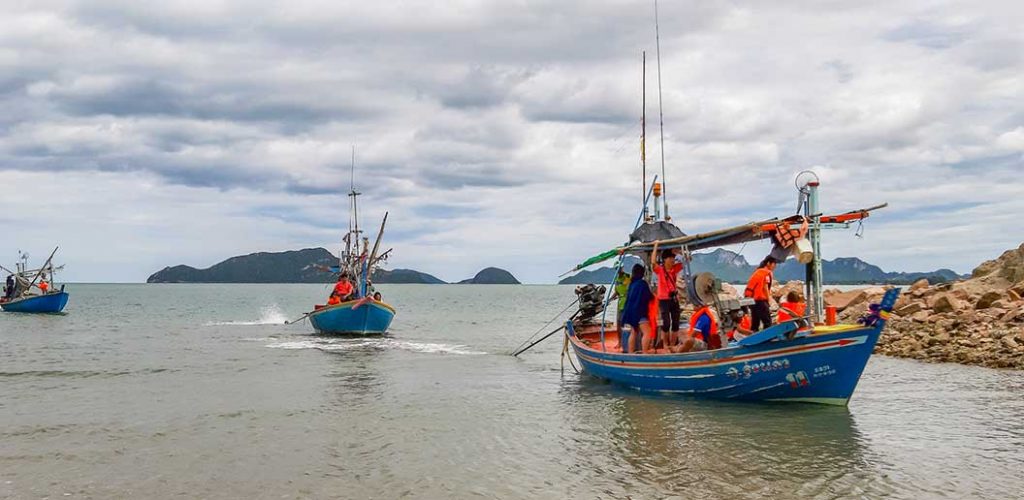Ever wondered what life is like within the local villages of our Prachuab Kiri Khan province? Questioned how people make their living? Pondered what their daily life looks like? Recently, I had the opportunity to find answers to those questions, and I jumped at it. But more on that in a moment.
 While tourism is vital to Thailand’s economy, attracting over 38 million visitors in 2018, increasing visitor numbers also generate concerns about infrastructure, sustainability and environmental impacts.
While tourism is vital to Thailand’s economy, attracting over 38 million visitors in 2018, increasing visitor numbers also generate concerns about infrastructure, sustainability and environmental impacts.
Over-tourism issues are already being experienced in several locations across Thailand. To alleviate some of these issues and to help spread the tourism dollar, the Tourism Authority of Thailand has been working to promote secondary and emerging destinations. Another avenue when tackling this complex issue is community-based tourism.
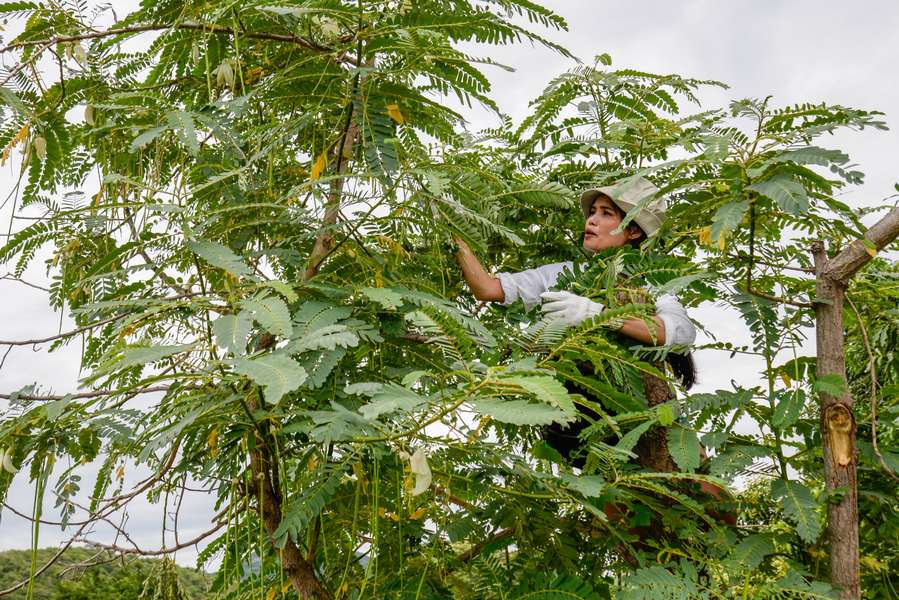 Community-based tourism allows visitors to share in culturally sustainable activities, to learn traditional skills, and to gain an understanding of the local way of life. Community-based tourism brings direct benefits to locals but also manages the relationship between locals and tourists. It puts the locals in charge of their destiny while opening their community up to tourism.
Community-based tourism allows visitors to share in culturally sustainable activities, to learn traditional skills, and to gain an understanding of the local way of life. Community-based tourism brings direct benefits to locals but also manages the relationship between locals and tourists. It puts the locals in charge of their destiny while opening their community up to tourism.
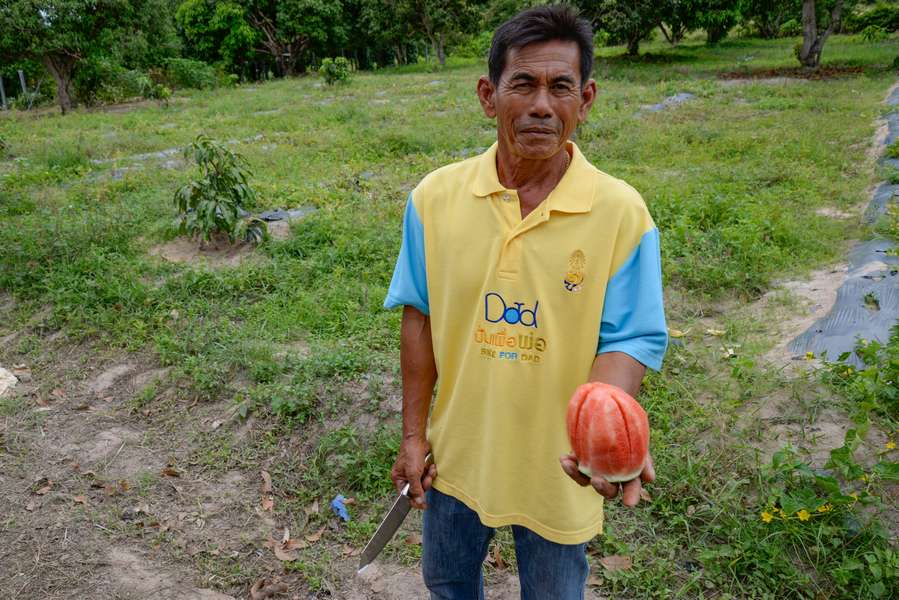 Bangkok based social-enterprise organisation Local Alike has been working with the Nong Khao Niew community in Sam Roi Yod for the last few months. As they have done in over 100 projects across Thailand, Local Alike helps communities like Nong Khao Niew establish their own self-sustaining community-based tourism.
Bangkok based social-enterprise organisation Local Alike has been working with the Nong Khao Niew community in Sam Roi Yod for the last few months. As they have done in over 100 projects across Thailand, Local Alike helps communities like Nong Khao Niew establish their own self-sustaining community-based tourism.
My experience kicked off with a comfortable 45-minute drive from Hua Hin to the Nong Khao Niew. Our group of twenty were there to experience “A Journey of Food’s Chain” tour.
We were warmly greeted by community leader Khun Sanan and village members and provided refreshing rosella juice drinks and snacks on our arrival. Khun Sanan, through an interpreter, explained how his community relies on agriculture and fishing in equal amounts, and our day with the community would introduce us to both.
Following Khun Sanan’s welcome, we divided into smaller groups and hopped aboard a Saleng. In many parts of Thailand, these motorbikes with sidecars are used as work vehicles, and for getting around. With a community member riding each Saleng, we headed to a local farm which now produces chemical-free crops, thanks to Local Alike’s guidance.
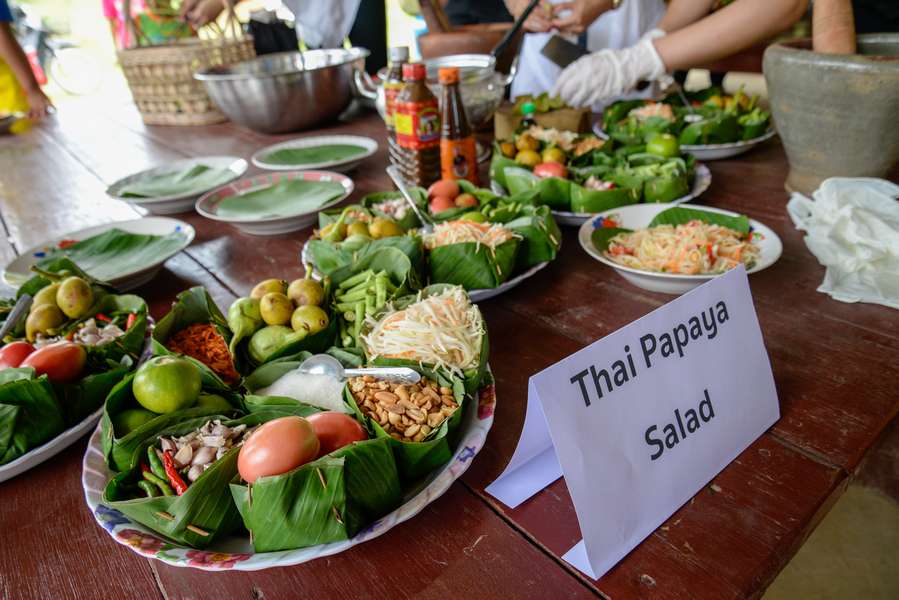 Our task was to collect the key ingredients for our lunch – papaya, lemongrass, melons, pineapple, guava, herbs and flowers. Each group had responsibility for preparing one dish for all of us to experience and enjoy. Ours was a sweet and sour stir fry with pineapple, and picking the fruit direct from the plant was educational in itself. The farmers happily showed us around and helped pick the most suitable produce.
Our task was to collect the key ingredients for our lunch – papaya, lemongrass, melons, pineapple, guava, herbs and flowers. Each group had responsibility for preparing one dish for all of us to experience and enjoy. Ours was a sweet and sour stir fry with pineapple, and picking the fruit direct from the plant was educational in itself. The farmers happily showed us around and helped pick the most suitable produce.
Back to the community hall where local ladies took control of each group, guiding us in the preparation of our lunch dishes. With mortars and pestles, smoking woks, and chopping boards all called into action we tour group members produced lunch items including Som Tam (papaya salad), spicy lemongrass salad, and a stir-fry of vegetable with Dok Khae (Hummingbird flower). Our dishes were accompanied by fried chicken wings, local fish, and Tom Yum Soup prepared by other locals. This lunch was all about eating what’s available and was exceptionally tasty to boot!
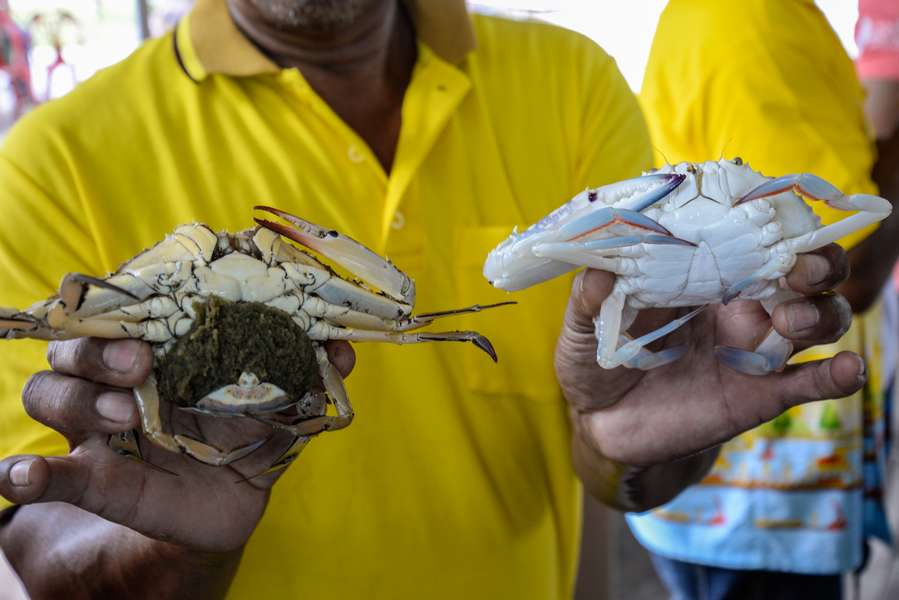 Loaded back onto the Saleng after lunch, we headed to a small creek just before Sam Roi Yod Beach (Dolphin Bay) where a Crab Bank had been established. Born out of necessity due to overfishing, and with guidance from Local Alike, the Crab Bank encourages the fishermen to harvest eggs from blue swimmer crabs and cultivate them before releasing the hatchlings back to the waterways. With a survival rate of only 10 per cent of some 30,000 eggs a female may produce, it’s a challenging task. This Crab Bank now allows for a higher potential of sustainable crab stock into the future.
Loaded back onto the Saleng after lunch, we headed to a small creek just before Sam Roi Yod Beach (Dolphin Bay) where a Crab Bank had been established. Born out of necessity due to overfishing, and with guidance from Local Alike, the Crab Bank encourages the fishermen to harvest eggs from blue swimmer crabs and cultivate them before releasing the hatchlings back to the waterways. With a survival rate of only 10 per cent of some 30,000 eggs a female may produce, it’s a challenging task. This Crab Bank now allows for a higher potential of sustainable crab stock into the future.
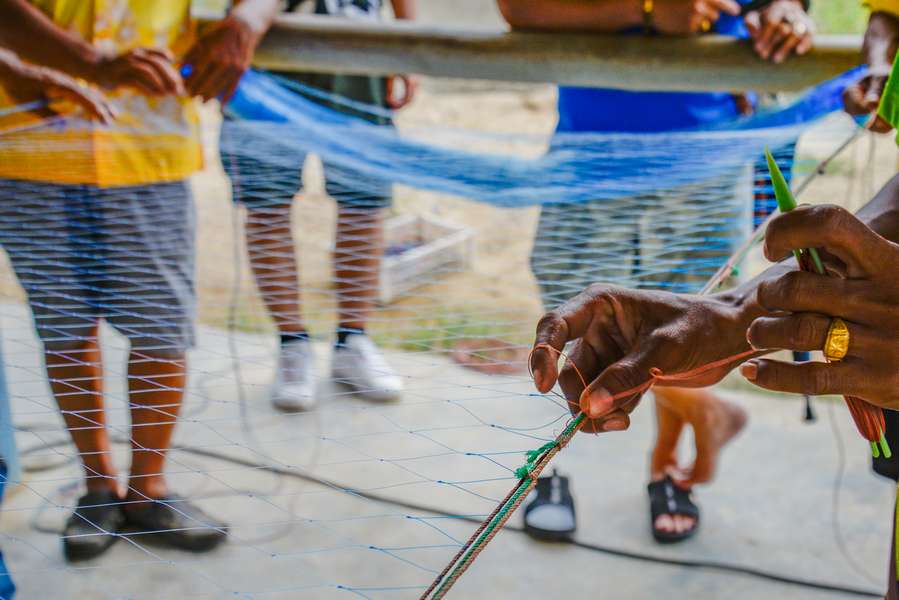 After a demonstration of net making, we donned bright new life-jackets and jumped aboard several local fishing boats to watch a 300-meter-long crab net being laid in Dolphin Bay and another being harvested. Once back on land at the Crab Bank, our final task was to plant mangrove seedlings in the estuary mudflats. Our little bit to help rejuvenate the local eco-system.
After a demonstration of net making, we donned bright new life-jackets and jumped aboard several local fishing boats to watch a 300-meter-long crab net being laid in Dolphin Bay and another being harvested. Once back on land at the Crab Bank, our final task was to plant mangrove seedlings in the estuary mudflats. Our little bit to help rejuvenate the local eco-system.
During discussion over the day, Simon Liew, Tour Operations Manager from Local Alike explained the merits of the community-based tourism concept: “Visitors gain an awareness of local lifestyles and ancient traditions through first-hand experiences,” he enthused. “The projects are owned and managed by the communities which generate an income stream used to improve quality of life as well as preserving traditions.”
Simon went on to explain the Local Alike financial model sees communities receive 70% of the tour purchase price while 30% goes to Local Alike for their services (initial set-up, local training and support, web promotion, handling bookings & payments, and the like). And of the 70% the local community receives, 5% must be invested into agreed community development goals. Local Alike then matches that 5% contribution.
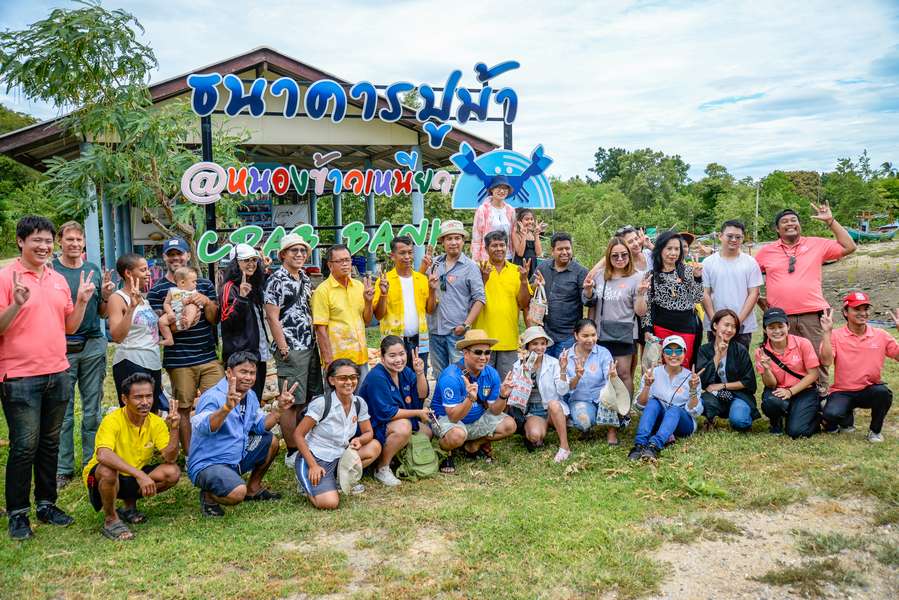 Farewells said and a group photo taken, it was time to return to Hua Hin. Although not part of the regular tour, we did make one stop on our way home – to Grand Marina Pranburi. It was this local developer who facilitated the initial connection between the Nong Khao Niew elders and Local Alike. It’s great to see a developer who understands that theirs is not a stand-alone project, but one that needs to have real connections to their local community.
Farewells said and a group photo taken, it was time to return to Hua Hin. Although not part of the regular tour, we did make one stop on our way home – to Grand Marina Pranburi. It was this local developer who facilitated the initial connection between the Nong Khao Niew elders and Local Alike. It’s great to see a developer who understands that theirs is not a stand-alone project, but one that needs to have real connections to their local community.
For me, this day tour is about tourism for social change and well done Local Alike for the work you do. I find it inspiring that such a practical and forward-thinking initiative has come to our beautiful Prachuab Kiri Khan shores.
Article & photos – Michael Cullen


